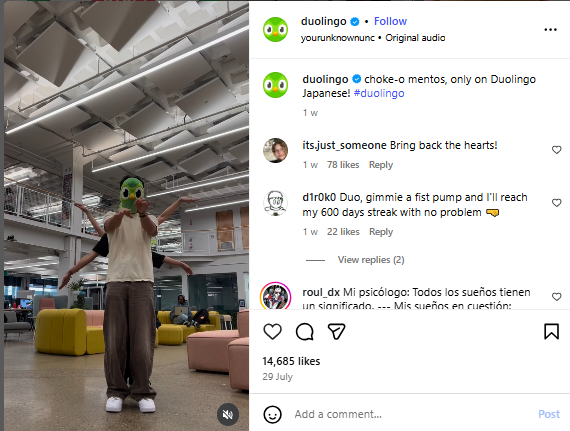
You poured time, budget, and energy into creating videos. Then you uploaded them with high hopes. But when the numbers came in, the silence was deafening. Views trickled in. Engagement stalled.
Sales? Nowhere near the projections.
However, this isn't a sign that video doesn't work for your brand. It's simply an indicator that something in the approach, timing, or delivery was off. Video is a powerful tool for growth, but only when strategy matches the way people consume and act on content today. Unfortunately, many companies use video as a one-off rather than a system, which is what derails performance.
Luckily, your investment isn't wasted. You already have the raw material to turn things around. In this article, we'll explain how to use the same content to improve your video marketing strategy so that it brings in the results you want.
When your video campaign or strategy fails, there's always a reason behind it. Here are a few common ones.
Many brands treat video like a lottery ticket. They produce something, put it online, and hope it catches fire.
The reality is that audiences rarely stumble upon content without a plan behind it. Successful video campaigns begin with a clear purpose: Who needs to see this, and what action do you want them to take after watching?
A strategy defines the target audience, sets goals, and establishes a distribution plan. Without it, you’re essentially broadcasting into a void.
It helps to consider video as a part of an ongoing content ecosystem rather than just a single hit. A clear strategy turns a random upload into a calculated step toward revenue, brand authority, and customer trust.
You have seconds, often less than five, to convince someone your video is worth their time. If the first frame feels flat, your audience will scroll past without hesitation.
The opening moments should grab attention instantly, then guide viewers into the main message without fluff or filler. Take the example of this video from Grind Coffee. The first frame is enticing enough to get you to watch more.
Scripting is another important component in video production. The characters or narrators are not just reading lines word-for-word. You have to structure information so each sentence earns the next.
Slow intros, generic openings, or lengthy explanations kill momentum. A compelling hook could be a bold statement or a relatable pain point. Follow that with clear messaging and a pace that holds attention from start to finish. For example, in this video ad, Mango hooks the viewers by mentioning its commitment to sustainability in fashion.
No matter how good a job you did at video production, if the video is posted in the wrong environment, it won't perform well. A three-minute, widescreen production might work well on YouTube but sink on Instagram Reels or TikTok. Similarly, a 15-second vertical clip could thrive on short-form platforms but feel out of place on LinkedIn.
Platform-specific formatting matters. You need to factor in aspect ratio, length, captions, and thumbnail style, as they influence watch rates.
Then, there's the selection of the optional distribution time. If you post when your audience isn’t online, your video will get fewer impressions, which ultimately means lower engagement.
The right platform and format amplify your message’s reach and relevance. In contrast, the wrong pairing makes it easy for the content to be ignored. Our Video Monetization and Distribution Playbook can help you avoid these mistakes.
Every viewer is at a different stage of the buying journey. A cold audience might need education or entertainment before they care about your product. Meanwhile, a warm audience might need reassurance through testimonials or case studies.
If your video’s message doesn’t match the audience’s mindset, it feels irrelevant. Imagine showing a product demo to someone who’s never heard of your brand. It’s too soon.
Likewise, showing an inspirational brand story to someone ready to purchase might miss the urgency. You must align each video with a specific stage of the video sales funnel so it feels timely and actionable.
Great storytelling is valuable, but if the video ends without telling viewers what to do next, momentum dies. A call-to-action (CTA) combines attention with conversion. It could be as simple as directing them to a landing page or inviting them to subscribe to updates.
Unfortunately, when videos don't have CTAs, people don't know what to do next. Similarly, vague CTAs are no help. In contrast, clear CTAs guide viewers on their next step.
For example, Grammarly ends this video with a clear CTA: download Grammarly for free. Instead, if it was something vague like ''learn more,'' viewers wouldn't really take much action.
We've pointed out the mistakes you likely made in your video plan. Now, let's discuss things you could have done instead.
Even before you film the first frame, you should know exactly what you want your audience to think and do after watching. Are you introducing your brand to people who have never heard of you? Are you collecting leads to feed into a sales process? Or are you asking for a direct purchase?
These objectives shape every creative and tactical choice, from the script to the length to the visual style. An awareness video might focus on storytelling and emotional resonance, while a lead-generation piece could offer a free resource in exchange for contact details. Conversion-focused videos should highlight urgency and proof that the product delivers.
Do you want to create a 7-figure video marketing funnel? You need to match your videos to the customer stage.
A first-time viewer doesn’t need the same information as a loyal client. For someone at the awareness stage, the goal is to spark interest and build trust. These videos often focus on education that relates to a problem your audience faces. They should answer the question, “Why should I care?” without pushing for an immediate sale.
Then, viewers compare their options in the consideration stage. Here, you can show detailed product walkthroughs and side-by-side comparisons. Animated explainers are also helpful, such as this video of Lefant's robotic vacuum cleaner.
For the decision stage, you want content that reduces hesitation. Testimonials, case studies, and limited-time offers can provide the final nudge toward action.
The important thing is not to misalign content. For example, if you show in-depth technical demos to a cold audience, you're just wasting video marketing budget. The most effective video strategies create a library of content for each stage and deploy it with intention.
The best video in the world will underperform if no one sees it. Too often, brands post once on a single platform and call it a day. In reality, distribution is an ongoing process, not a one-time event.
Start by mapping out where your audience spends time. If your buyers are active on LinkedIn, publish natively there and consider paid amplification for key campaigns.
For consumer-facing brands, TikTok, Instagram Reels, and YouTube Shorts may offer better reach. Each platform has its own rules, so adapt accordingly.
Then comes retargeting. Here, you turn attention into action. Retargeting uses engagement signals, like views, clicks, and watch time, to identify people who showed interest but didn’t yet convert.
You can then serve them follow-up videos or offers to keep your brand top-of-mind and guide them further along the journey. For example, if someone watches 50% of a product explainer on Facebook, you can retarget them with a testimonial video or a discount offer.
A distribution and retargeting plan makes sure your video doesn’t vanish after launch. It creates a sustained presence that builds recognition and ultimately drives conversions.
The best way to make video work is to create a framework that acts like a machine. At INDIRAP, we do just that. As a video production company Chicago, we turn ideas into high-performing assets. Our approach follows three clear stages: Strategy → Production → Activation.
We begin with a discovery session to understand your goals, audience, and sales process. As a leading video production company Chicago brands trust, we identify how each piece of content, whether it’s corporate video production, commercial video production, or testimonial video production, will fit into your larger marketing plan. The clarity shapes the message, tone, script, length, platforms, and format for maximum impact.
Then, we handle details like pre-production planning, on-location filming, and so on. We organize scripts, storyboards, talent, and locations so the shoot runs flawlessly. In doing so, we present your business at its absolute best.
Once filming wraps, our editorial team edits, refines, and polishes the footage. It includes sound design, color grading, and graphics that bring your vision to life.
But production is just one of the many steps in this process. We deliver your videos ready for integration into sales funnels, ad campaigns, and internal communications. Activation helps your video marketing strategy drive conversions and measurable ROI.
.gif)
We all know that video is hot right now. But some video formats are hotter than others. Here are our bonus recommendations.
Platforms like TikTok, Reels, and YouTube Shorts have conditioned audiences to expect quick, high-impact content. Short vertical videos meet people where they scroll, delivering a fast message without asking for a big time commitment.
The format also benefits from platform algorithms that heavily promote fresh, engaging clips. And with over 5.5 billion social media users, there's always an audience to watch your content.
Duolingo is doing short-form content right. Their Reels regularly get thousands of likes and comments.

How to use: Keep the videos under 30 seconds for maximum retention. Lead with a strong visual or statement in the first three seconds, then follow with a tight, focused message. Subtitles are a must since many users watch with the sound off. These videos are ideal for brand awareness, quick product teasers, or sparking interest that you later retarget with longer content.
Buyers trust real stories more than brand claims. Seeing and hearing actual customers explain how your product or service delivered results builds credibility and lowers resistance to purchase.
The human connection often moves prospects further down the decision path faster than traditional ads. For example, this testimonial video for HUB Interiors can make viewers trust the company more than their own marketing.
How to use: Focus on results and transformation, not just praise. Structure each testimonial with a problem → solution → outcome flow. Keep them authentic, as overly scripted testimonials lose impact. They work particularly well for B2B sales cycles and higher-value consumer products.
Complex products or services can confuse prospects. An explainer video turns that complexity into a clear story that helps people quickly understand what you do and why it matters.
For example, Canva has a teacher-focused explainer video to show how its Magic Studio works. Such clarity often shortens sales cycles and improves lead quality.
How to use: Use animation or live action (or a mix) to illustrate the problem and show how your solution works. Also, use language your audience actually uses. Avoid jargon unless your market expects it. You can show these videos on landing pages, trade show displays, onboarding sequences, and paid ads targeting prospects in the consideration stage.
These three formats are performing right now because they align with how people consume information right now. When you use them strategically, each of these can become a driver of conversions and engagement.
Sick of wasting budget on content that doesn’t convert? Book a free, no-obligation Discovery Call today and let us build the video system your business actually needs.